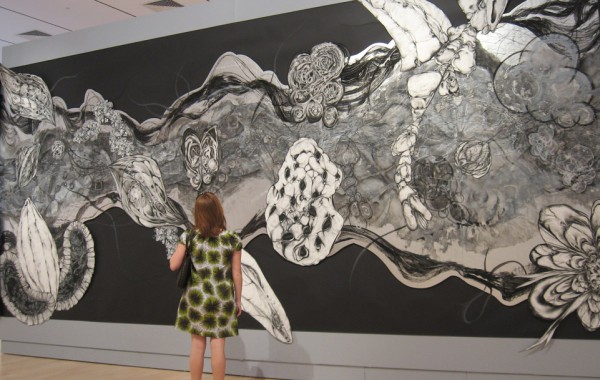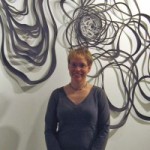Thu 27 Aug 2009
Ritual Remembering – Art of Sara Schneckloth
Posted by A.A. under Art, Graphic Art, Made me look, Made me think
[5] Comments
© Sara Schneckloth
The work of Sara Schneckloth strives to embody moments of remembering. The emotions and memories from our past experiences leave their mark on more than our minds, they affect the function of our organs, our bodies, today. This thought informs Schneckloth’s work as she seeks to channel her painful memories into emotive lines of charcoal on paper.
© Sara Schneckloth 2005
The following are excerpts from an interview with Leslie Hinton:
I like to have a sense of a loose structure in which I can invent and explore the themes that are most relevant, but it is rarely a pre-determined event. Drawing lends itself to this kind of immediacy, in terms of both materials and how they are handled, and there is always the sense for me that I’m witnessing a thought evolve as I work. The initial phases of the process are much more visceral/intuitive than pre-conceived and intellectualized, but there is a moment in which I do come at the work from a more analytic bent.
I believe memory informs so much of how we move, how we hold ourselves, how we inscribe a surface – by consciously channeling this ‘ritual remembering’ I am hoping to give past experience an imaged present.
It’s along these lines that I started thinking – if I occupy a certain memory, actively grieving, what happens to my body. When you remember times of embarrassment, your face flushes, if you remember excitement or danger or fear your body responds – with adrenaline or muscle tension or a stomach clench. I realized that as I was making these drawings, as I was immersed in the act of seeing and drawing, of remembering and drawing, my body was going through a whole set of reactions and making marks that came out of those physical places of memory. My stomach would hurt, my shoulders would tighten, I would clench my teeth.
Reliquaries are vessels for holding remnants, or relics, of the dead – they show up in many cultural and religious traditions – in Catholicism – saints have reliquaries that preserve remnants of clothing or possessions or even fragments of bones…
My reliquaries are done in mixed media – oil, charcoal and pastel on paper – many on toned brown paper. To make them, I occupied the mental space of grief, of loss, of anger and sadness, and tried to draw from the gut – starting with a gesture that carried some of the emotion related to the memory I was feeling – then I consciously built it into a form of a container – adding features that I pulled from the work I did with the inherited objects – adding handles, spouts, mouths, lids, turning them into vessels, literal containers…
I had been reading a lot about reliquary figures in West Africa – small carved statues that sat on top of reliquary drums that contained human skulls and bones – the figures functioned as intermediaries between the living and the dead, serving as a site for ceremonial offerings and talking to the deceased. I was attracted to this idea of the intermediary object – something that could translate between the states of life and death, inside and outside, and serve as a point of focus or meditation. In a way, that’s what I felt like I was doing with my drawings. They stood in between me and the memory of my family, and it felt like by doing them, I was coming to grips with that separation.
At the time of this article,
Sara Schneckloth is Assistant Professor – Drawing,
University of South Carolina, Columbia, SC.
She has been teaching since 1996
Images are property of Sara Schneckloth
More:
Full interview with Leslie Hinton
SaraSchneckloth.com


Portraying thoughts visually is one of the most imaginational experiences. The wondering is amazing. I really like these drawings.
Kathryn
I love her work. Thanks for introducing her to me. I thought about her work all weekend.
Evocative. Remembering others & events stimulates my creative musical process frequently. People & experiences are stored in my body, my emotions, my soul.
Allowing them to surface gives breath to life and allows others to touch thier lives.
The thought of ritualising my remembrances has a certain appeal. Not just the dramamtic losses from death, but the more subtle events.
I really enjoyed Sara’s work and her statements of how she works. I learned something too, never had heard of reliquaries. Very interesting. The work is beautiful, poetic even. It has a dream like quality, which I guess is a different kind of memory. The black and white adds to the timelessness of it for me. Excellent.
There is so much to see here. I was pulled in immediately to the knotted twists and turns…the memories pushing outward and contracting in pain. Memories are our perceptions of what is past, and I find this work reflects that wonderfully. I would love to see this exhibit in person